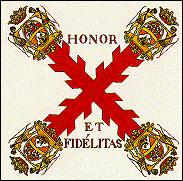
Established in 1793 as the Diocese of Louisiana and the Floridas, it took in all the territory from the Rocky Mountains to the Atlantic Ocean and from Canada to the Gulf of Mexico except the territory of the Diocese of Baltimore (i.e., territory belonging to the United States). Before 1793 Louisiana had been under the juristiction of the Diocese of Santiago de Cuba, before 1762 under the authority of the Diocese of Quebec.
Chiefly papers of bishops Luis Penalver y Cardenas, 1793- 1810; Louis Guillaume-Valentin Dubourg, 1815-1826; Joseph Rosati, CM, apostolic administrator, 1827-1829; Leo Raymond de Neckere, 1829-1833; Anthony Blanc, 1835-1860; Jean Marie Odin, 1861-1870; Napoleon J. Perché, 1870- 1883; Francis X. Leray, 1883-1887; and Francis Janssens, 1888-1897.
Other correspondents include the Capuchin bishop, Cyril Antonio Sieni, better known as Bishop Cyril of Barcelona, who was the first resident bishop to have jurisdiction over Louisiana, 1784-1793; Rev. Thomas Hassett, administrator of Louisiana, 1801-1803; Father Antonio de Sedella, auxiliary vicar and pastor of the parish of St. Louis, New Orleans, who was a leader in the power disputes that plagued the new diocese in the first years of the 19th century; and Frederick Lacheze of Guadelope, West Indies (1820s & 1830s).
See http://archives.nd.edu/calendar.htm
 This is a web presentation of the Rosco Hill's book on the "Cuban Papers'" , a great reference work to find the file (Legajo) on a specific subject on the Spanish period in Louisiana. Gives a summary of what's contained in each file . Many of the microfilmed Legajos are to be found in the Hill Memorial Library at LSU.
This is a web presentation of the Rosco Hill's book on the "Cuban Papers'" , a great reference work to find the file (Legajo) on a specific subject on the Spanish period in Louisiana. Gives a summary of what's contained in each file . Many of the microfilmed Legajos are to be found in the Hill Memorial Library at LSU.











